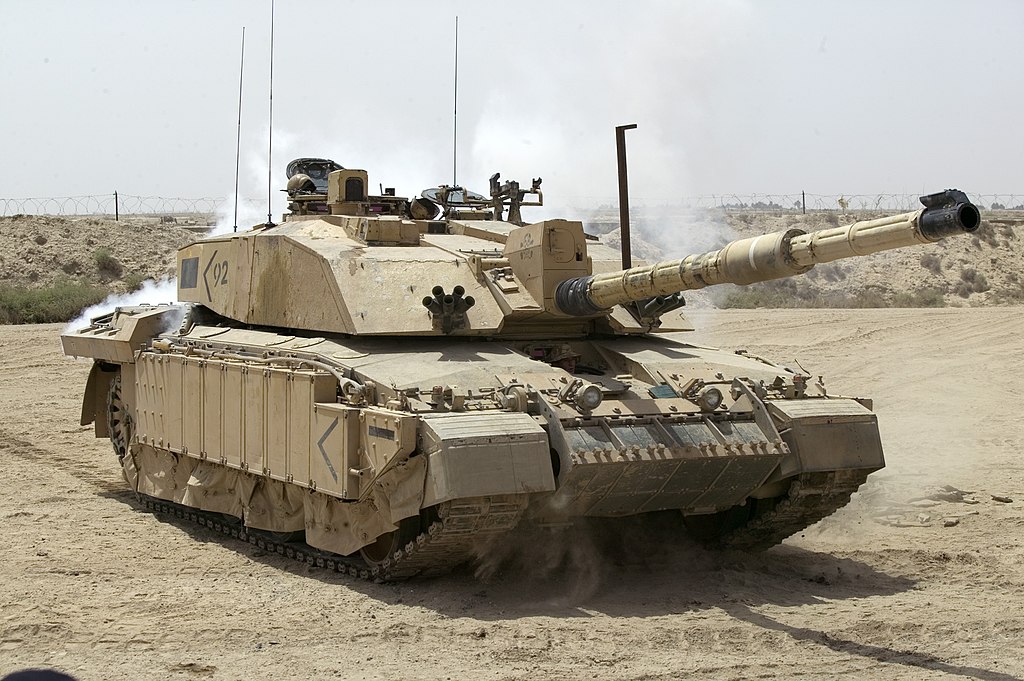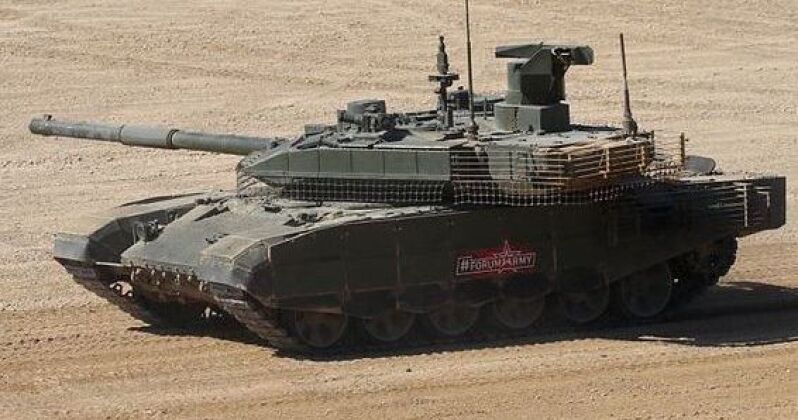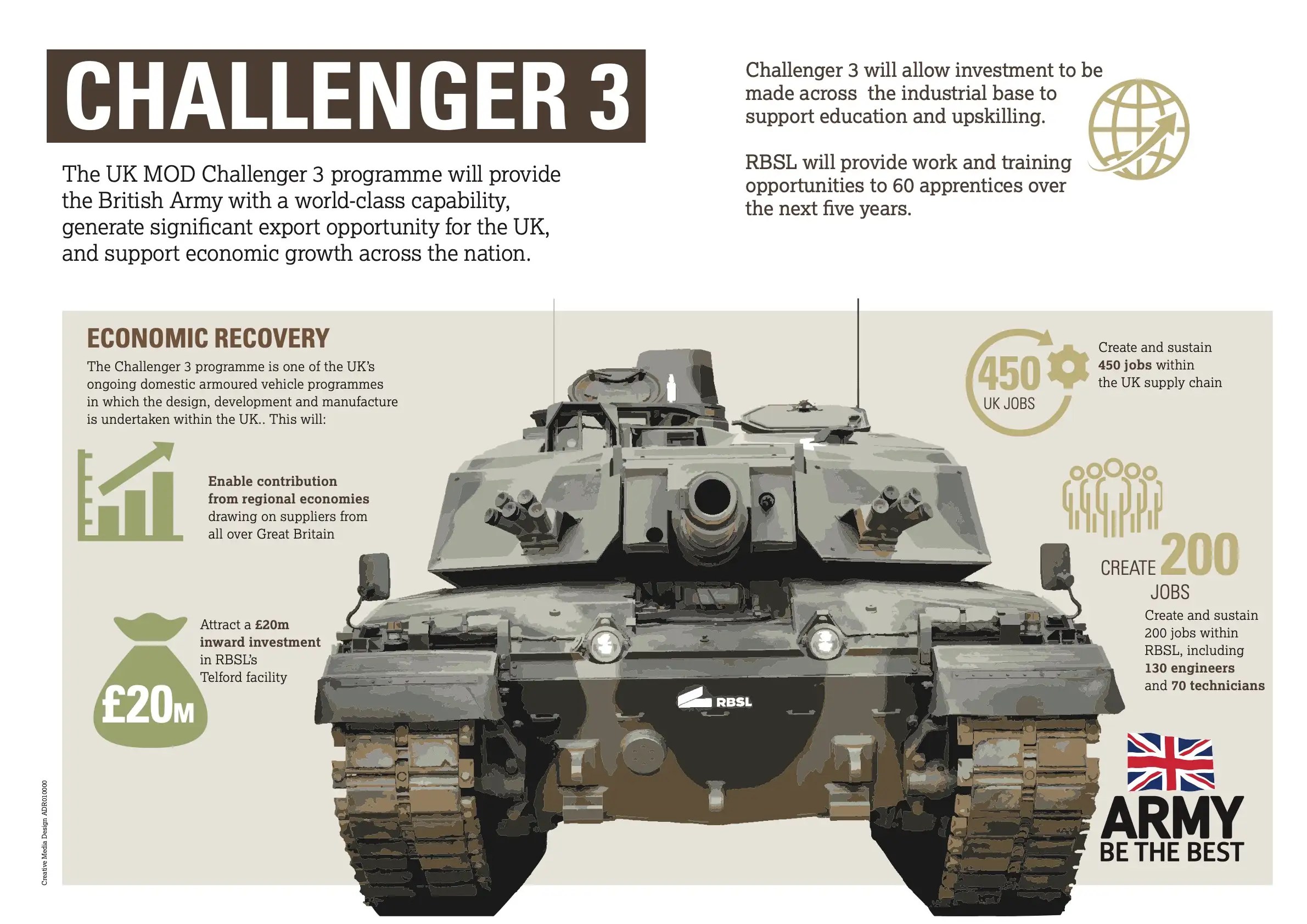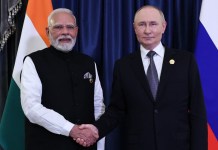Very soon, the war in Ukraine could witness a tank-on-tank battle between the UK’s Challenger-2 and Russian T-90 Main Battle Tanks (MBTs).
The Ukrainian army is reportedly equipping its 25th and 80th air-mobile brigades with Challenger-2 tanks to counter the Russian T-90 tanks and BMP-T fighting vehicles in the forests around Kreminna, around 16 kilometers north of Lysychansk in eastern Ukraine’s Donbas region.
Currently, the 25th and 80th air-mobile brigades operate the fastest T-80BV tanks, the fastest tank types in the Ukrainian arsenal.
So far, there has not been a lot of tank-on-tank combat in Ukraine, with the Russians and the Ukrainians primarily deploying their tanks in combined-arms groupings, which include infantry and fighting vehicles. The infantry protects the tanks, while the latter destroys enemy fortifications to make way for the infantry.
However, this could change from early April onward, as the UK plans to deliver 14 BAE Systems Challenger-2s to Ukraine by the end of March.

Western military commentators suggest that Challenger-2s could pose a considerable challenge for the Russian 90th Tank Division, which is operating the T-90 tanks and BMP-T fighting vehicles in Kreminna, which have so far given a hard time to the Ukrainian army.
In January, a Ukrainian tank commander acknowledged that Russia’s T-90 tank has superior combat capabilities and said that it takes three tanks or a ‘good luck’ to engage the advanced Russian main battle tank.
Meanwhile, Russia’s BMP-T tank support vehicle has effectively defended and aided the Russian MBTs during their armored operations. It is well-equipped to safeguard the MBTs from ambushes by enemy infantry, Anti-Tank Guided Missiles (ATGMs), or grenade launchers in open terrain or urban centers.
Despite the technological disparity between the T-90s and all other Ukrainian tank types, the Ukrainian armed forces have still managed to destroy or capture at least 50 Russian T-90s, according to the latest figures compiled by the OSINT military tracking blog Oryx based on visual confirmations.
The Ukrainians have even put some of the captured T-90 tanks back into combat against Russia after reparations at some of their remote warehouses, located close to the frontlines, which have been discussed in great detail by EurAsian Times here.
Also, earlier this month, a Russian BMP-T was allegedly destroyed near Kreminna. On February 9, a video emerged on social media of the first visually documented destruction of the Russian BMPT Terminator by the soldiers of the 140th Separate Reconnaissance Battalion of Naval Forces of Ukraine.
First visually documented destruction of Russian BMPT Terminator by the soldiers of 140th Separate Reconnaissance Battalion of Naval Forces of Ukrainehttps://t.co/hvJuYm0B4A pic.twitter.com/GXjBHgq4n9
— Special Kherson Cat ??? (@bayraktar_1love) February 9, 2023
Therefore, the introduction of Challenger-2s in Ukraine could exacerbate the scale and rate of Russia’s tank and armor losses.
Challenger-2 Vs T-90
The Challenger-2 is a third-generation MBT, the same generation as the Russian T-80 and T-90 tanks.
The armor of the Challenger-2 is called the Chobham armor or the Dorchester armor and is considered among the best in the world. While its composition is top-secret, it is around two times stronger than steel and can reportedly survive a direct hit from a Russian T-72.
Furthermore, during the conflict, more armor could be added with Explosive Reactive armor (ERA) kits, and additional bar armor can also be fitted.
The T-90 has a welded composite armor hull with built-in Kontakt-5 explosive reactive armor blocks.
However, the upgraded T-90M variant has improved armor protection with Relikt built-in Explosive Reactive Armor (ERA) in place of the previous Kontakt-5, designed to protect shaped charges and significantly reduce the impact of the armor-piercing fin-stabilized discarding sabot (APFSDS) rounds.
In addition, the tank features net armor on the lower part of its turret and slat armor at its rear to improve defenses against rocket-propelled grenades by disrupting the fusing of the warhead.

The tank also has a countermeasures system, which triggers smoke grenade launchers that can help conceal the vehicle if illuminated by a laser beam, thereby minimizing the chance of being hit by enemy anti-tank-guided weapons with semi-automatic guidance.
The Challenger-2 weighs 70 tons, which is significantly heavier than the T-90, which weighs between 46 and 48 tons. Also, the T-90 is considerably smaller in size than the Challenger-2.
The smaller size and low profile of the T-90 allow it to navigate tight spaces such as forests and mountains, thereby enabling it to entrench itself.
The Challenger-2 is said to have a maximum on-road speed of around 58 kilometers per hour and about 40 kilometers off-road. The T-90 is said to have a top speed of about 59 kilometers on-road and 45 kilometers per hour off-road.
The Challenger-2 is armed with a rifled Royal Ordnance L30 120-mm main gun, which can deliver main armament rounds up to a range of around four kilometers.

The gun can also fire high-explosive squash head (HESH) and armor-piercing fin-stabilized discarding-sabot (APFSDS) rounds. The HESH rounds have a much longer range of up to 8.04 kilometers and are much more effective against buildings and thinner-skinned vehicles.
The Challenger-2 can carry 49 main armament rounds, a mixture of the HESH and APFSDS, and white phosphorus smoke rounds.
The secondary armament comprises two 7.62mm machine guns, one coaxially mounted with the main gun and the other placed on top of the roof.
The T-90s, most of which are A variants armed with a fully-stabilized 2A46M 125mm smoothbore gun, can fire APFSDS, HE, and HE-FRAG rounds only up to a range of around 2-3 kilometers during the day and 2-2.6 kilometers at night time.
However, the T-90M boasts an improved 2A46M-4 125mm smoothbore main gun, which has a more extended range of 4-5 kilometers and is said to be 15-20% more accurate than the standard 2A46M gun.

The secondary armament includes a coaxial 7.62mm machine gun and a roof-mounted remotely-controlled weapon station armed with a 12.7mm heavy machine gun.
Both the Challenger-2 and the T-90M have thermal sights and hunter-killer capability.
Interestingly, the T-90M captured in September last year by Ukrainian force, was found outfitted with Nakidka radar-absorbent material (RAM), which is said to reduce the vehicle’s infrared, thermal, and radar signatures, and is meant to defend the tank against guided weapons reliant on thermal imaging to lock onto a target.
That said, it is doubtful how much the 14 Challenger-2s will tip the scales in favor of the Ukrainian armed forces. The 25th and 80th Air Mobile Brigades could each form a company of seven tanks, which could be rendered incapable of sustained combat with only a few breakdowns or losses.
Therefore, it is likely that the UK will eventually provide Ukraine with additional Challenger-2s, as there could be a hundred or more T-90s in the forests around Kreminna, which are not possible to defeat with only 14 tanks.
- Contact the author at tanmaykadam700@gmail.com
- Follow EurAsian Times on Google News




